Abstract
1. The membrane conductance of the crayfish muscle was measured with intracellular micro-electrodes. Increase in the membrane conductance induced by various concentrations of γ-amino butyric acid (GABA) was measured in the Br-, NO3-, I- and CNS- solutions and compared with that in Cl- solution. When the membrane was activated by lower concentrations of GABA, the resulting membrane conductance in NO3- and I- solutions was larger than in Cl- solution, while the membrane conductance activated by higher concentrations in NO3- and I- solutions were smaller than in Cl- solution. The membrane conductance activated by GABA was larger in Br- solution and smaller in CNS- solution than the membrane conductance activated in Cl- solution, throughout the concentration range of GABA examined.
2. The reversal potential of inhibitory junctional potentials (i.j.p.s) was measured shortly after replacing Cl- by foreign anions: Br-, NO3-, I- and CNS-. In I- solution the i.j.p.s produced by lower stimulation frequencies showed a reversal potential at a more hyperpolarized level than those produced by higher stimulation rates.
3. Shortly after replacing Cl- by I-, the GABA potential induced by iontophoretic application showed a triphasic potential change at the `reversal' potential. The reversal level of the GABA potential produced by smaller doses was at a more hyperpolarized level than that produced by larger doses.
4. Possibilities of a concentration effect of GABA are discussed. It is suggested that the relative permeability of the crayfish inhibitory membrane to anions changes depending on the concentration of GABA.
Full text
PDF

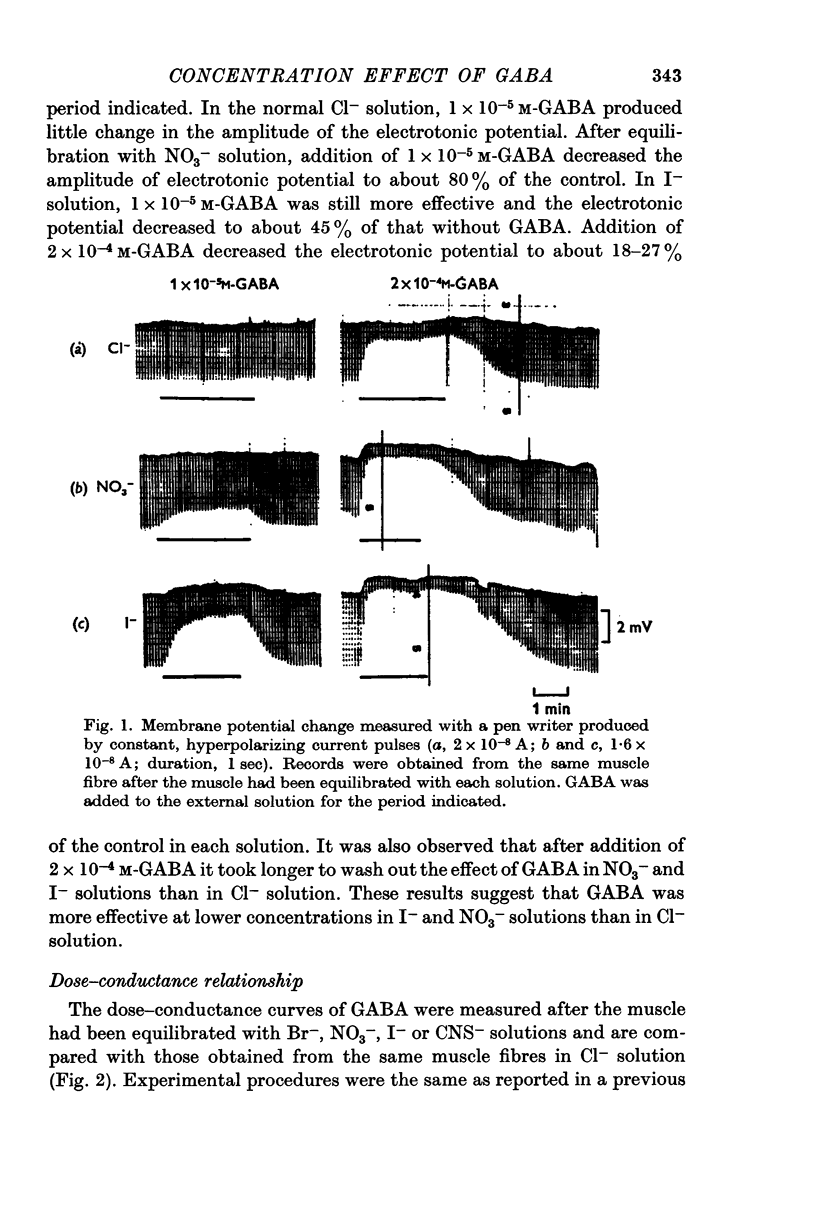
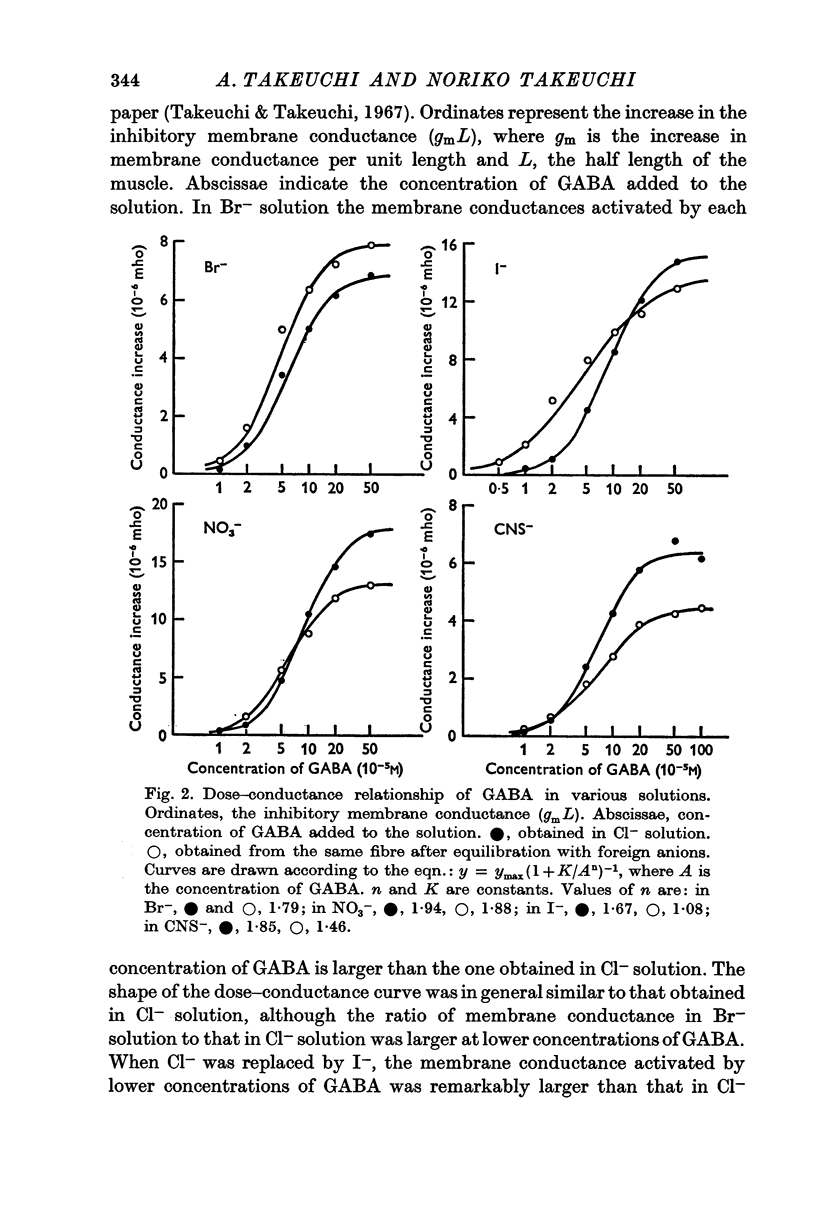
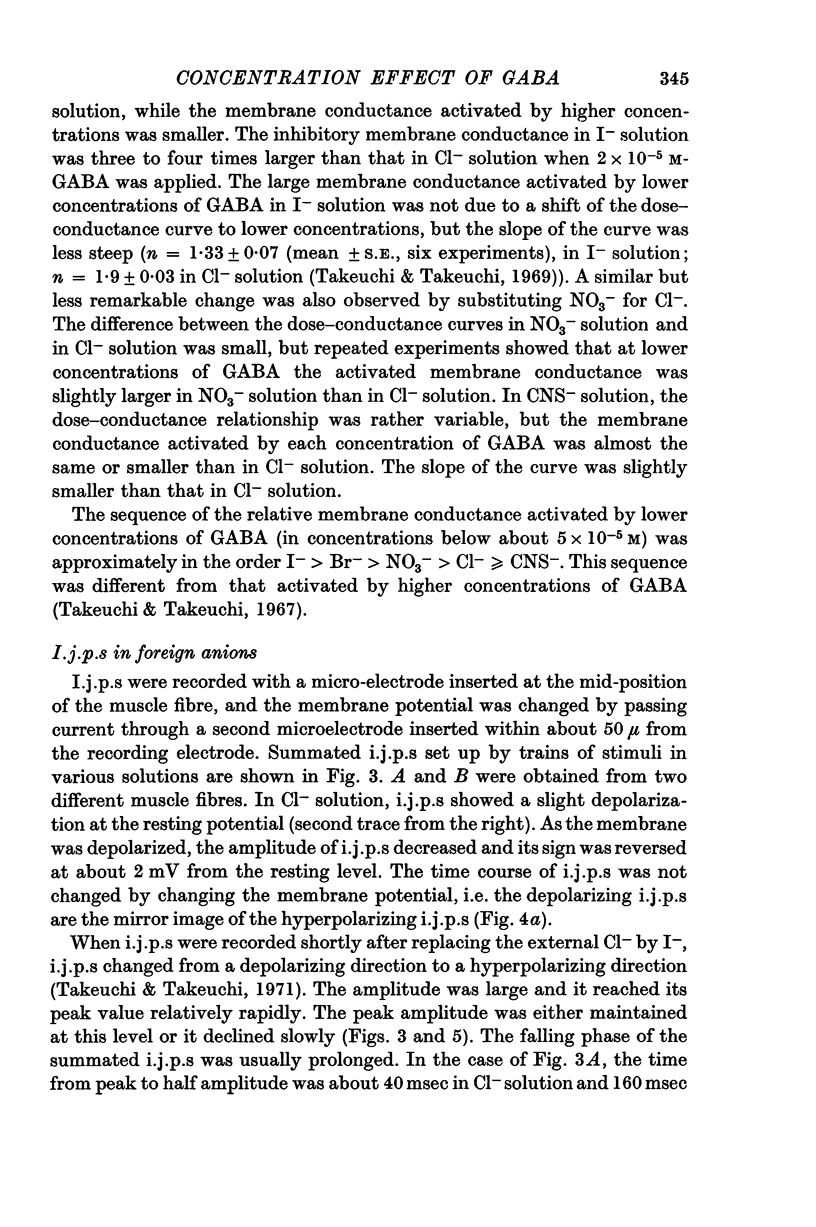
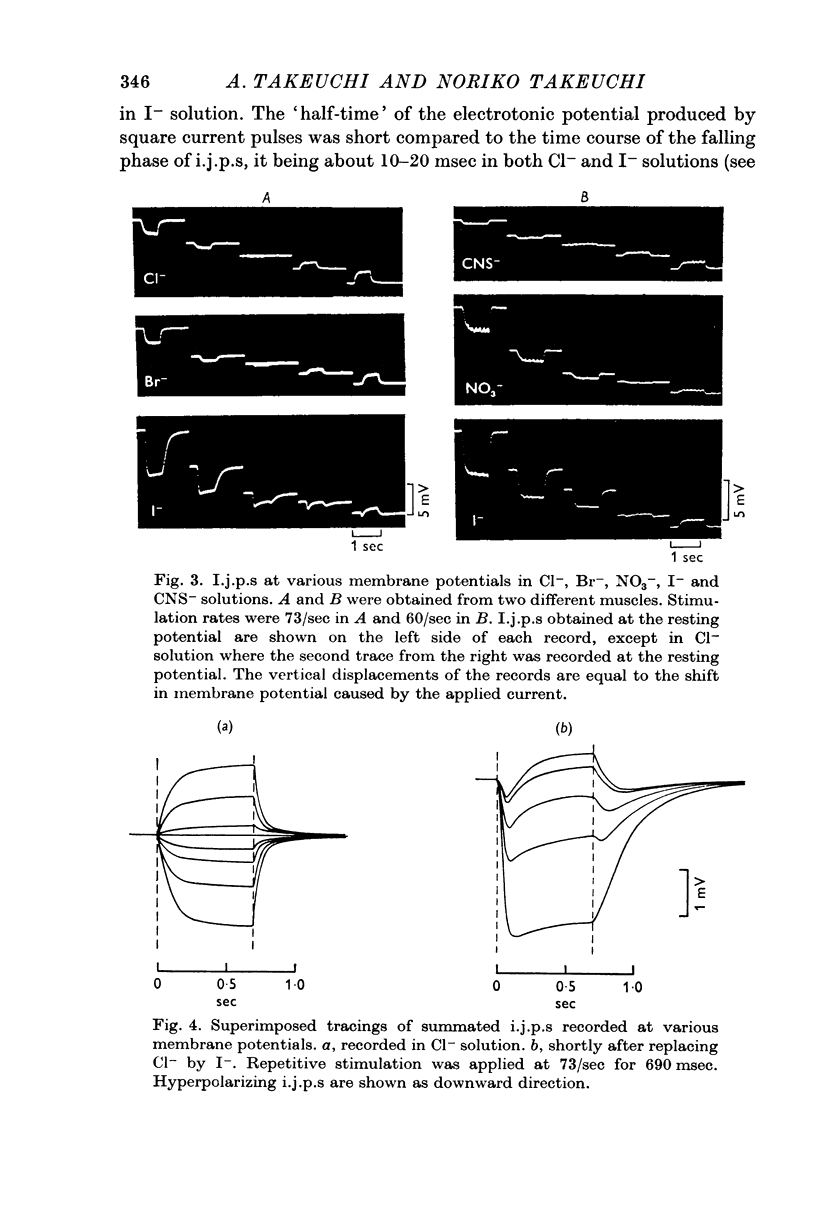
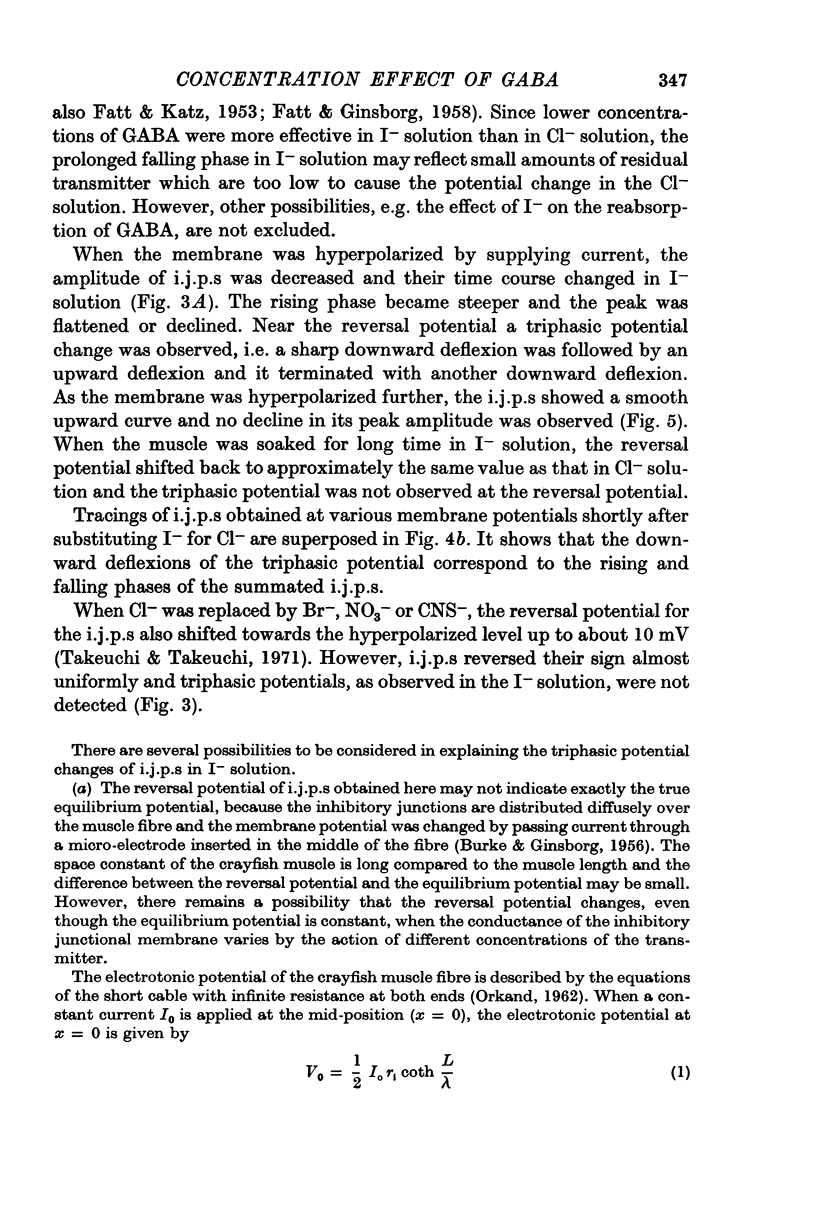
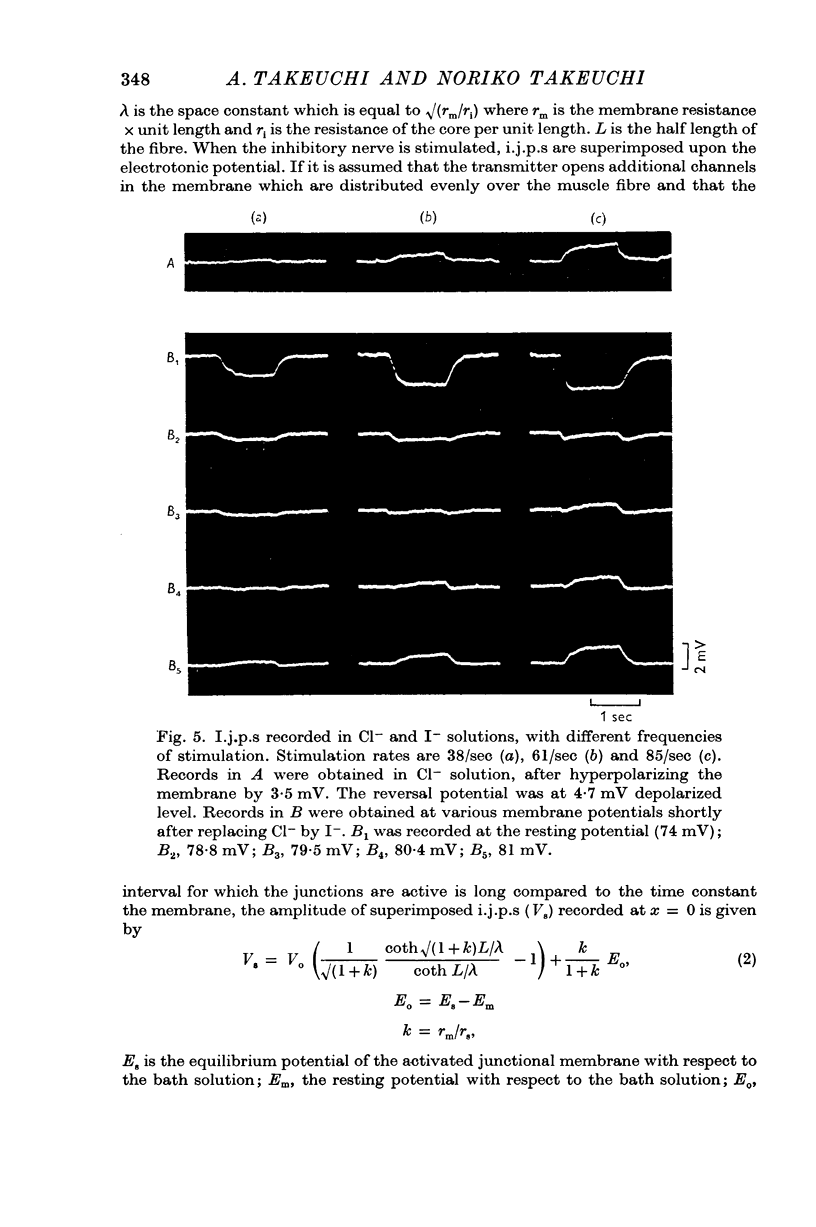
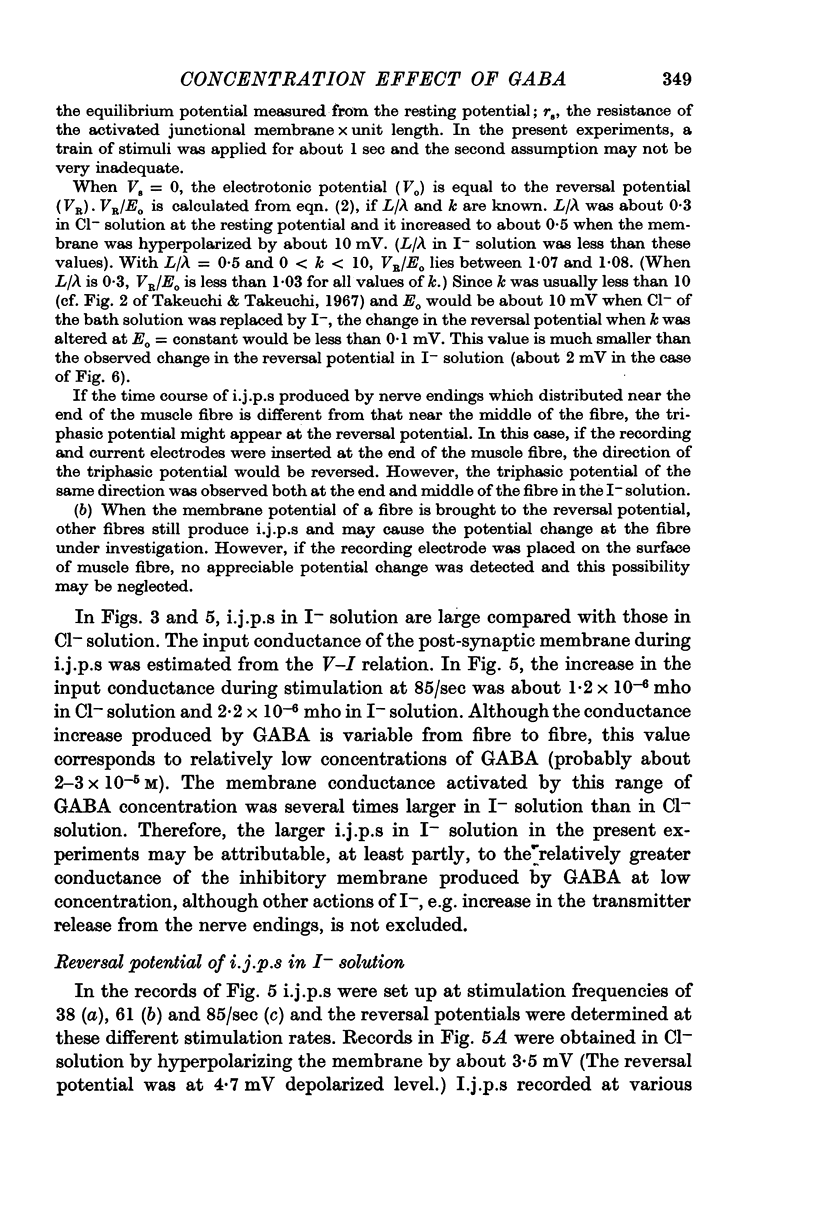
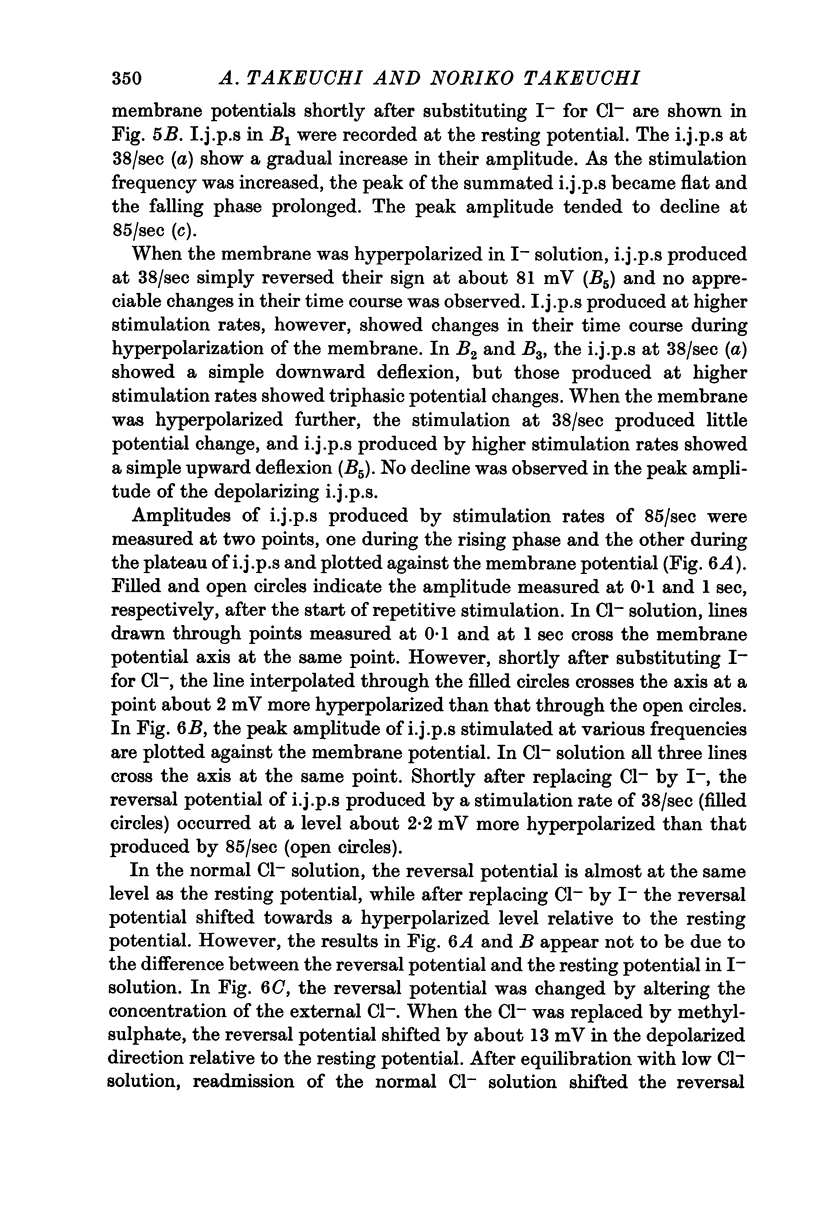
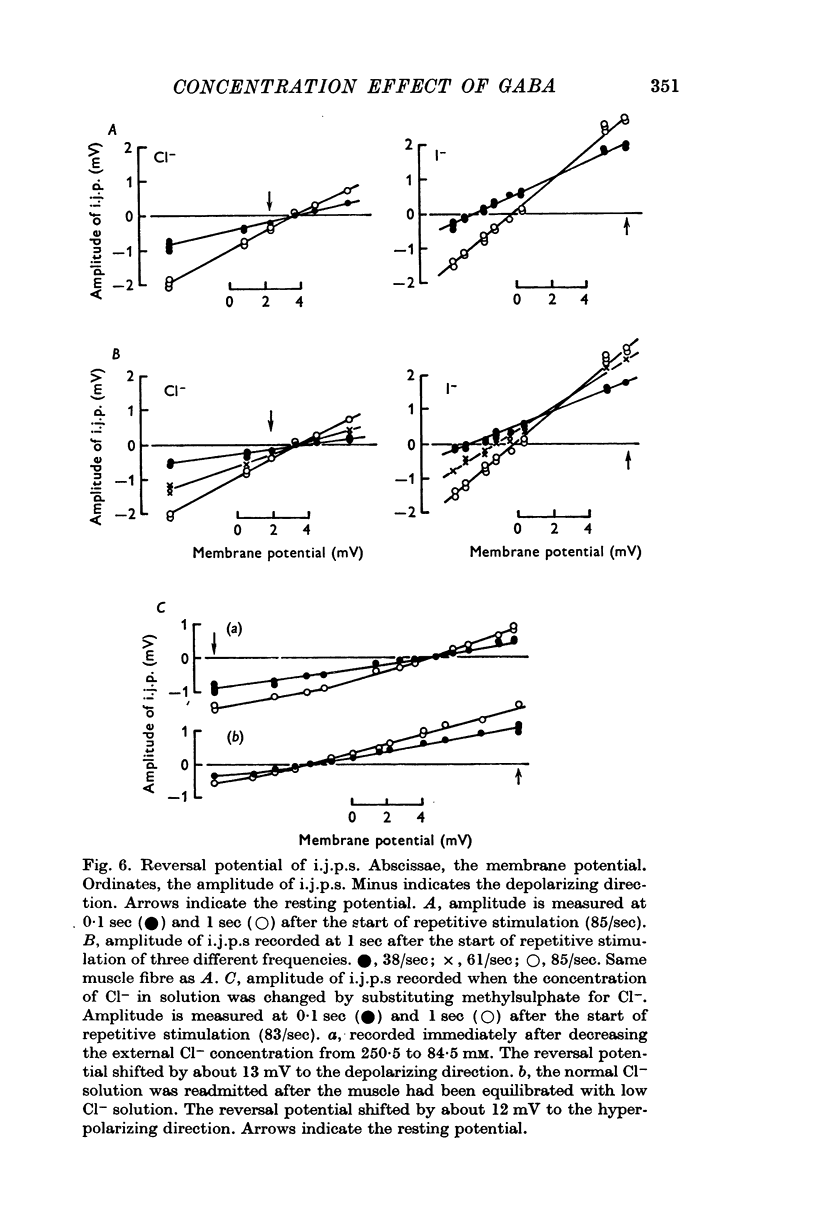
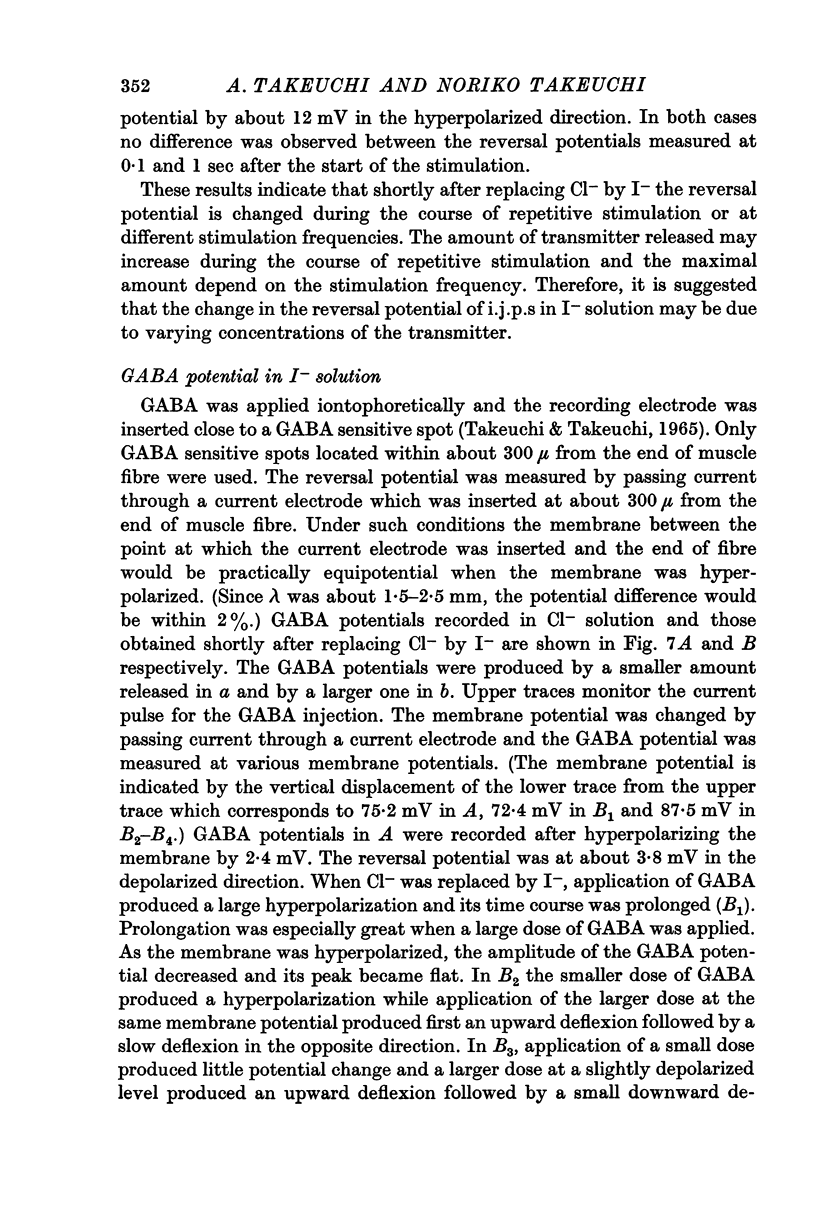

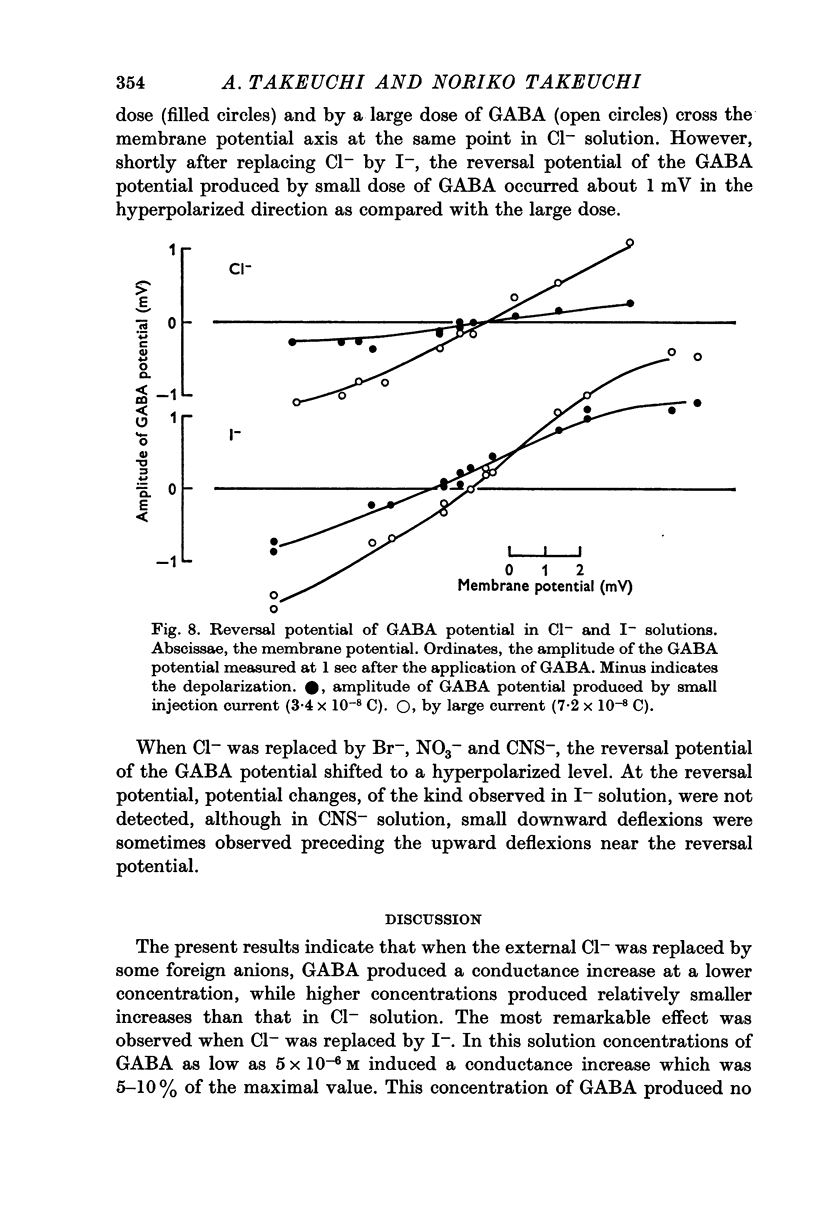
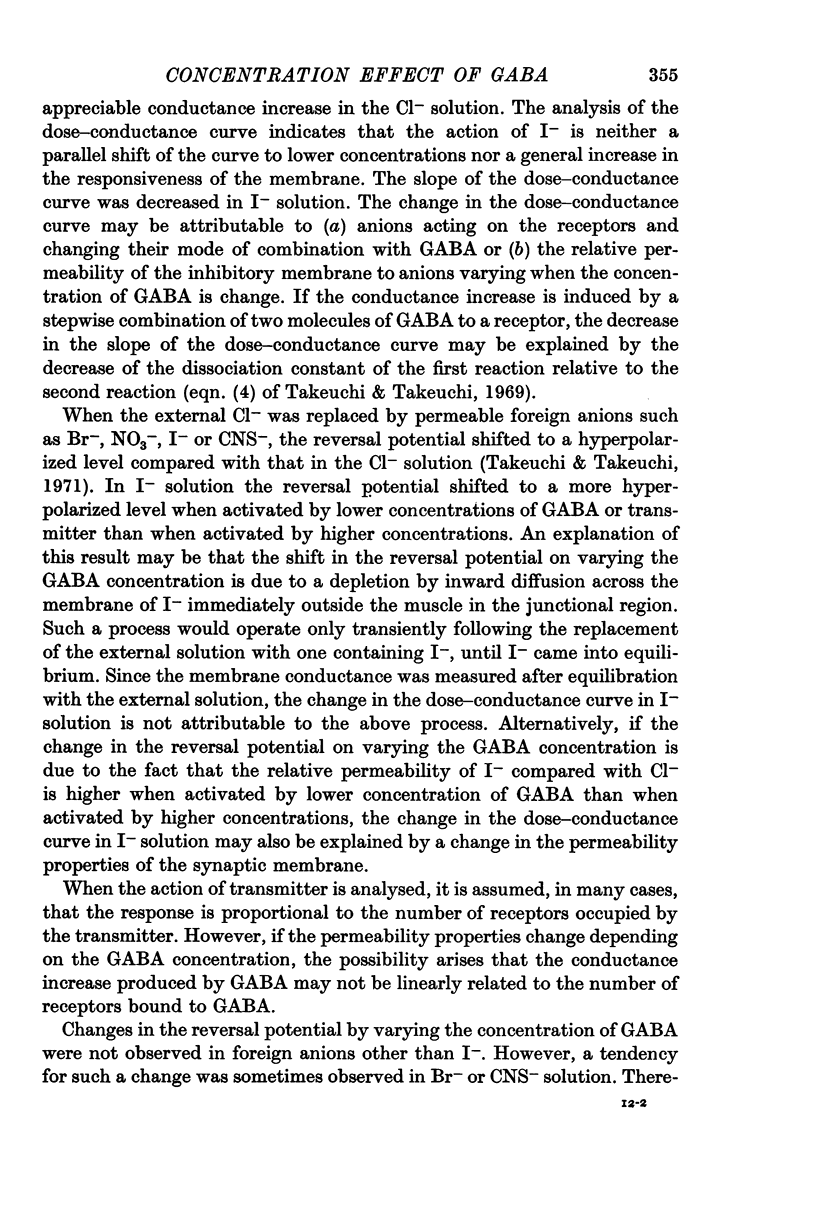
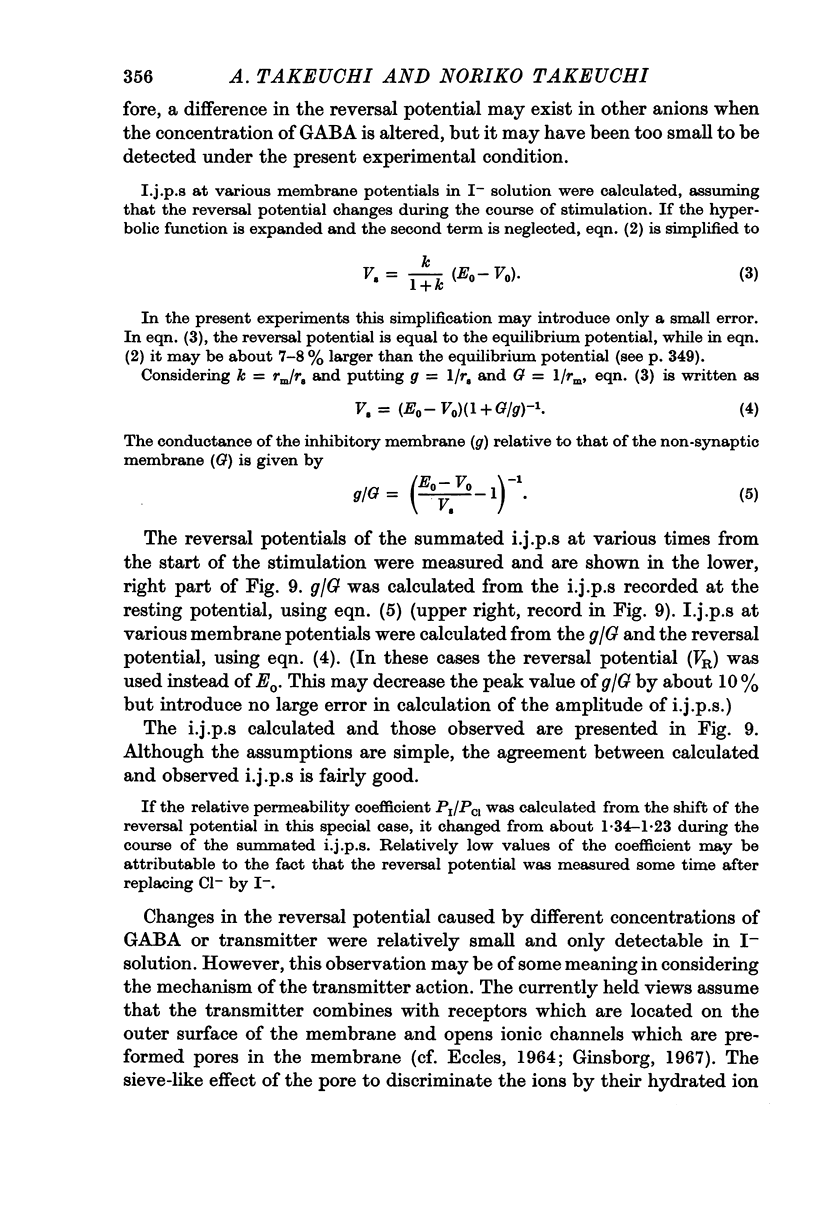
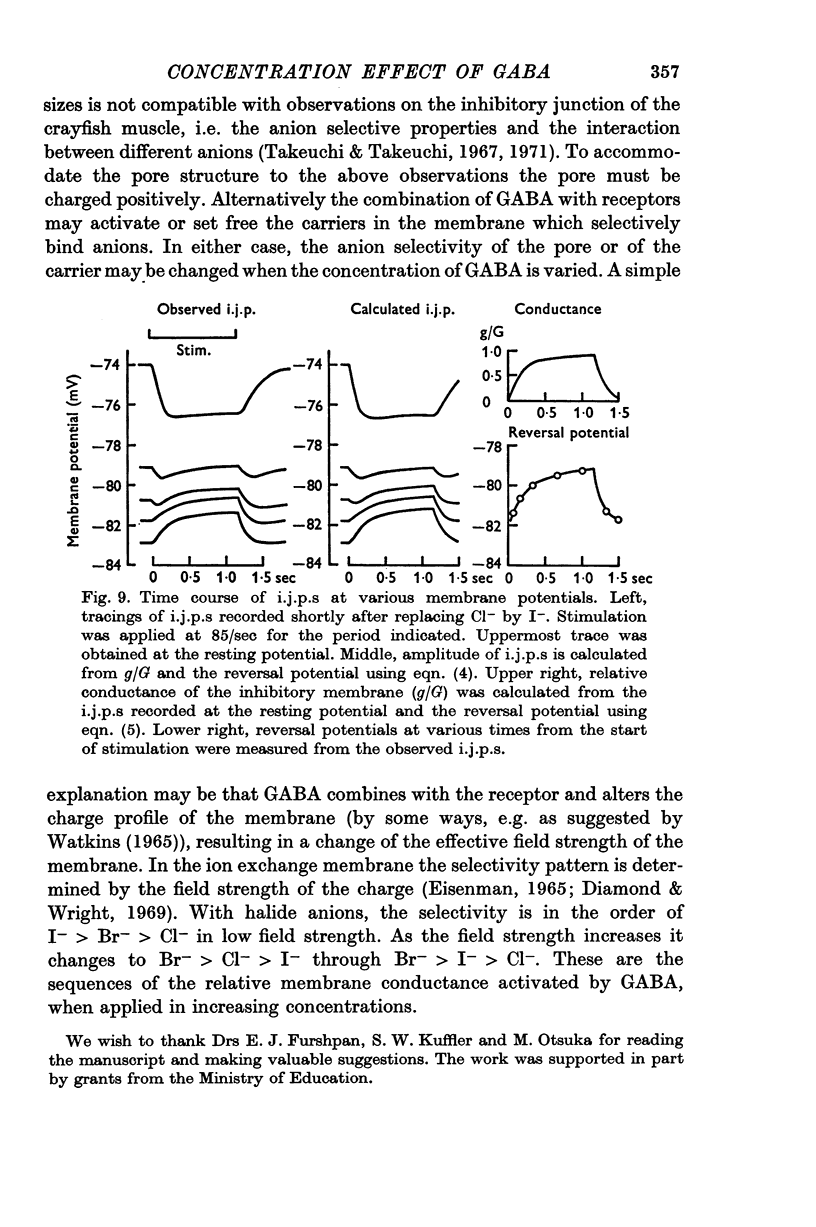
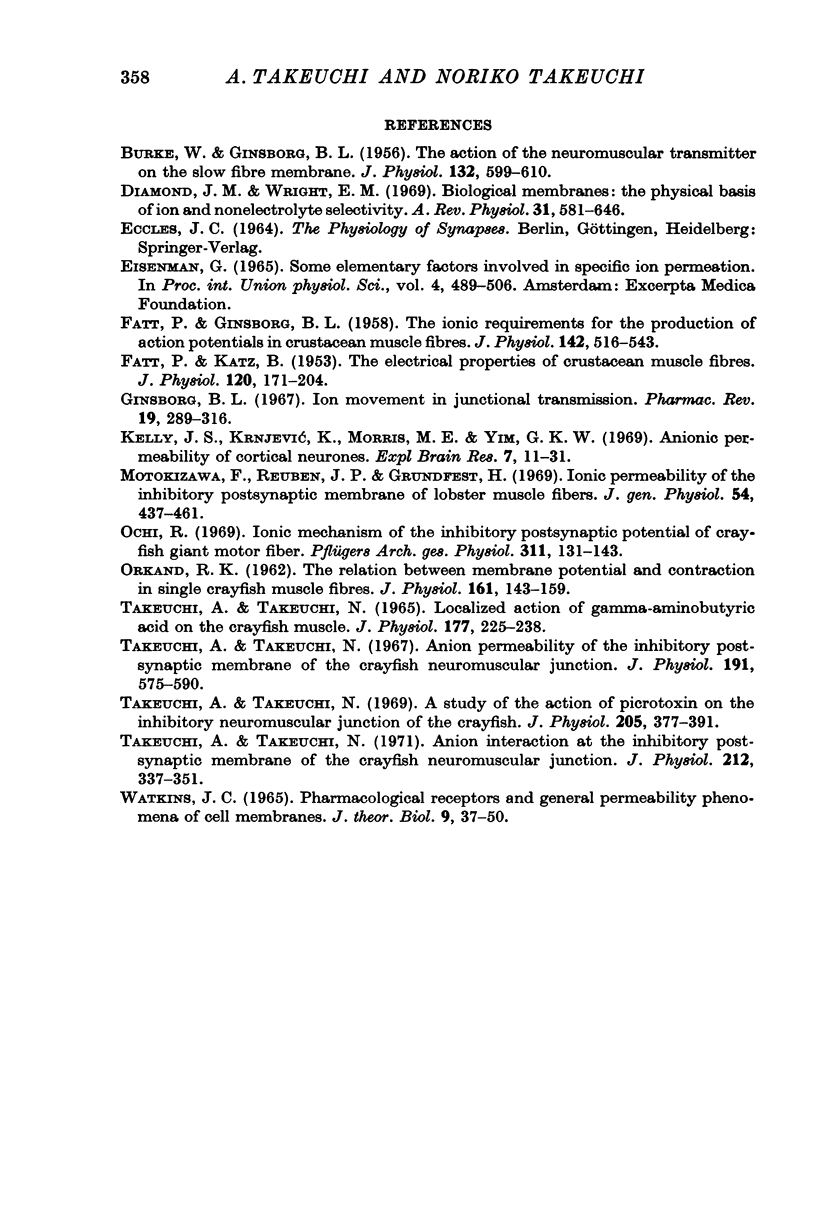
Selected References
These references are in PubMed. This may not be the complete list of references from this article.
- BURKE W., GINSBORG B. L. The action of the neuromuscular transmitter on the slow fibre membrane. J Physiol. 1956 Jun 28;132(3):599–610. doi: 10.1113/jphysiol.1956.sp005552. [DOI] [PMC free article] [PubMed] [Google Scholar]
- FATT P., GINSBORG B. L. The ionic requirements for the production of action potentials in crustacean muscle fibres. J Physiol. 1958 Aug 6;142(3):516–543. doi: 10.1113/jphysiol.1958.sp006034. [DOI] [PMC free article] [PubMed] [Google Scholar]
- FATT P., KATZ B. The electrical properties of crustacean muscle fibres. J Physiol. 1953 Apr 28;120(1-2):171–204. doi: 10.1113/jphysiol.1953.sp004884. [DOI] [PMC free article] [PubMed] [Google Scholar]
- Ginsborg B. L. Ion movements in junctional transmission. Pharmacol Rev. 1967 Sep;19(3):289–316. [PubMed] [Google Scholar]
- Kelly J. S., Krnjević K., Morris M. E., Yim G. K. Anionic permeability of cortical neurones. Exp Brain Res. 1969;7(1):11–31. doi: 10.1007/BF00236105. [DOI] [PubMed] [Google Scholar]
- Motokizawa F., Reuben J. P., Grundfest H. Ionic permeability of the inhibitory postsynaptic membrane of lobster muscle fibers. J Gen Physiol. 1969 Oct;54(4):437–461. doi: 10.1085/jgp.54.4.437. [DOI] [PMC free article] [PubMed] [Google Scholar]
- TAKEUCHI A., TAKEUCHI N. LOCALIZED ACTION OF GAMMA-AMINOBUTYRIC ACID ON THE CRAYFISH MUSCLE. J Physiol. 1965 Mar;177:225–238. doi: 10.1113/jphysiol.1965.sp007588. [DOI] [PMC free article] [PubMed] [Google Scholar]
- Takeuchi A., Takeuchi N. Anion interaction at the inhibitory post-synaptic membrane of the crayfish neuromuscular junction. J Physiol. 1971 Jan;212(2):337–351. doi: 10.1113/jphysiol.1971.sp009328. [DOI] [PMC free article] [PubMed] [Google Scholar]
- Watkins J. C. Pharmacological receptors and general permeability phenomena of cell membranes. J Theor Biol. 1965 Jul;9(1):37–50. doi: 10.1016/0022-5193(65)90055-x. [DOI] [PubMed] [Google Scholar]


